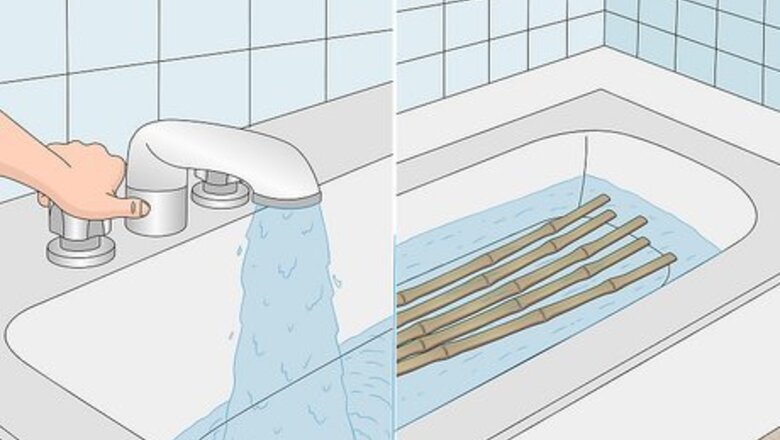
views
Bending Bamboo Using Water
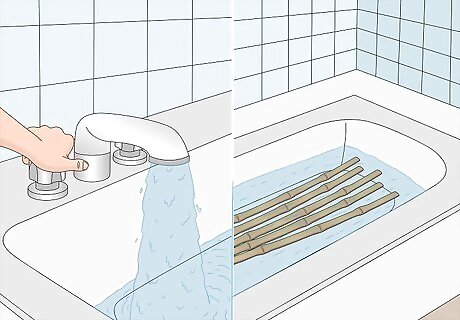
Fill a tub with lukewarm water. Place your bamboo poles in the tub and allow them to soak overnight. As with wood, bamboo requires moisture to bend. The moisture softens the lining and hemicellulose in the bamboo cells and allows them to flex. Without heat and moisture, these molecules crystallize making them virtually immovable. Depending on the size and thickness of the bamboo, soaking time may be longer.
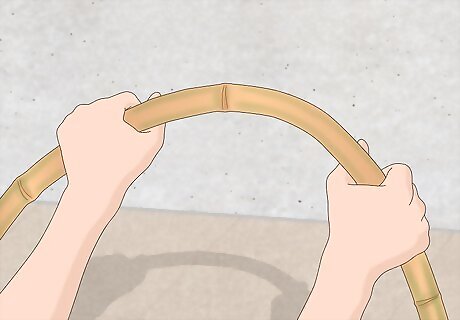
Test your bamboo. Pull the bamboo out of the water and slowly bend the bamboo, attempting to coax it into the shape you need. If you hear a crackling sound, the bamboo has not been soaked long enough, and needs to be placed back in the water.
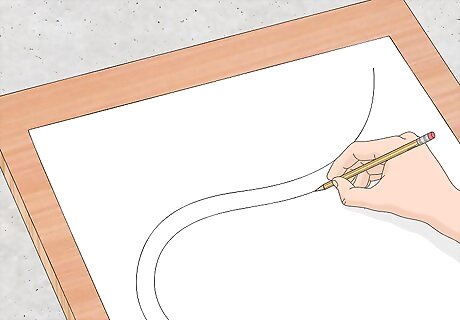
Draw your desired shape. Take a large sheet of paper and sketch out the shape you want you bamboo to take. Place this paper on top of your large piece of plywood.
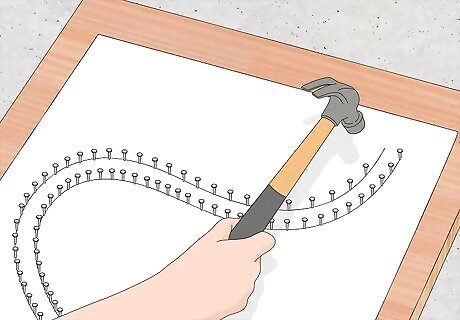
Nail the design. Using the sketch as your guide, hammer nails into the plywood, following the sketched shape. Each nail should be approximately an inch apart. Hammer in a second row of nails. This row should run parallel to the shape you just nailed and the distance between the two rows should be slightly larger than the diameter of the bamboo.
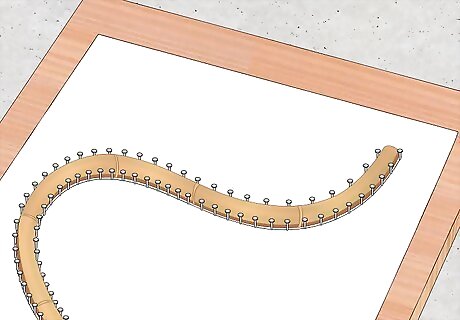
Shape your bamboo. Once your bamboo has been adequately soaked and is pliable, remove it from the water and place it on the plywood between the nails. Allow the bamboo to dry 1-3 days. You can test whether your shape has been set by picking the bamboo off the board. If the bamboo retains the desired shape, it has finished drying into shape.
Bending Bamboo Using a Knife
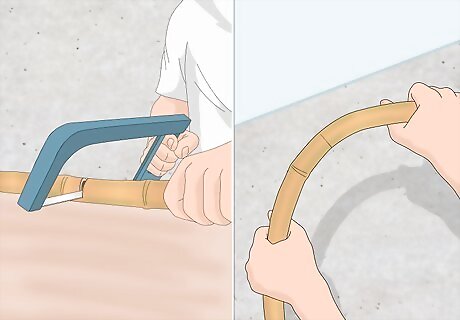
Cut your bamboo. Make a V-shaped cut right beneath one of the bamboo nodes. A node is one of the joints in the bamboo pole that looks like a knee and divides the cane into segments. Make your cut narrow if the bend you desire is slight. Make your cut wider if the bend you need is more dramatic. The cut can be as deep as two-thirds the diameter of the pole. Cuts can be shallower for less dramatic bends.
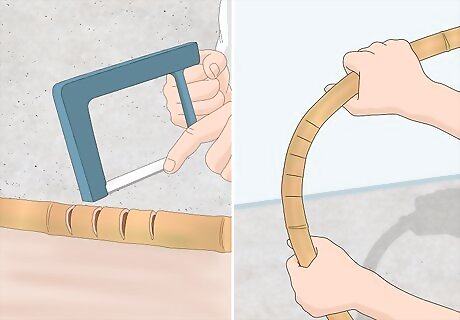
Make multiple node cuts in the same cane to create a circular shape. Cutting near a node makes this alteration less visible.
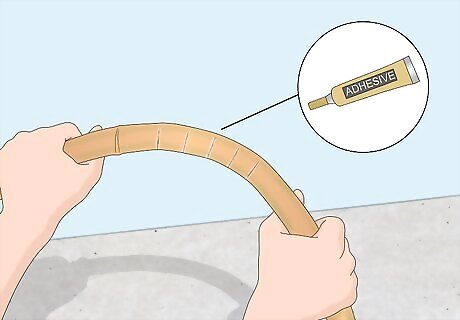
Bend your bamboo into shape. Secure it either by lashing it, or using an adhesive to set your bamboo in place.
Bending Bamboo Using Heat
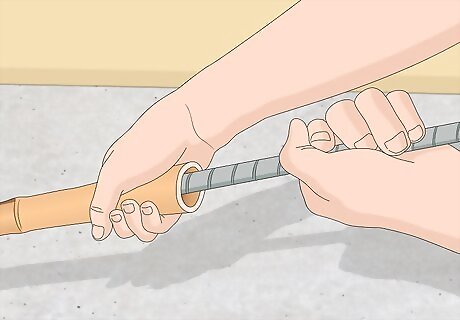
Hollow out your bamboo poles. Use a piece of rebar (a steel bar commonly used as a tension device to reinforce concrete) to break the bamboo's internal nodes. This is done by shoving the rebar in and out of the bamboo pole on one end, then the other. You should end up with a hollow tube.
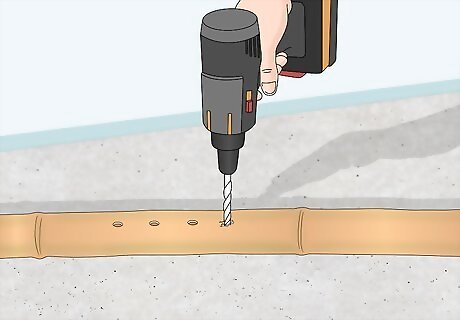
Drill some vapor holes. Vapor builds up during the application of heat to the bamboo pole. In order to let the vapor escape, it is recommended that you drill a few holes at the nodes.
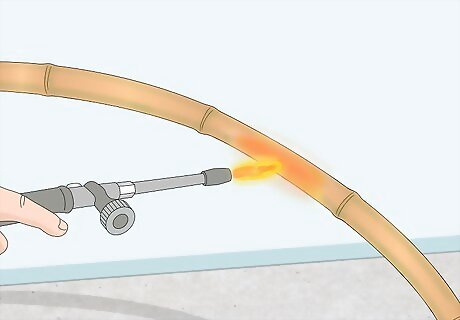
Heat your bamboo. Take your torch and begin applying heat to the pole with the flame, continually moving from the widest part of the bamboo, to the thinnest. The heat should be above boiling temperature. This achieves two things: The heat coloring of the bamboo. Application of the heat acts as a stain on the bamboo and gives it a warm, coffee color. The lignin and pectin in the bamboo becomes soft and pliable allowing you to more easily mold the bamboo.
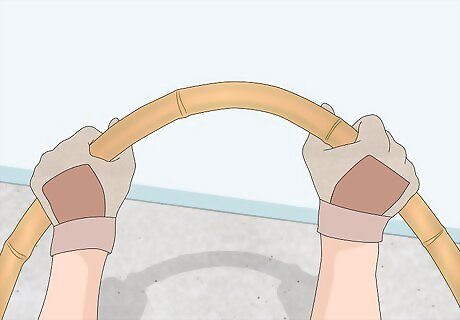
Check the bamboo for flexibility. Using a wet rag, sweep down the bamboo pole, wiping moisture over surface. Test the flexibility of the bamboo by bending the pole slightly. It should give fairly easily.
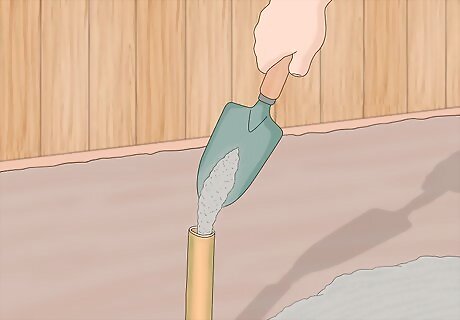
Plug one end of your bamboo and fill it with fine sand. Hit the bamboo with the side of your hand or the side of the small shovel to move the sand all the way to the bottom of the pole. The sand stabilizes the bamboo so the walls do not buckle when you bend it.
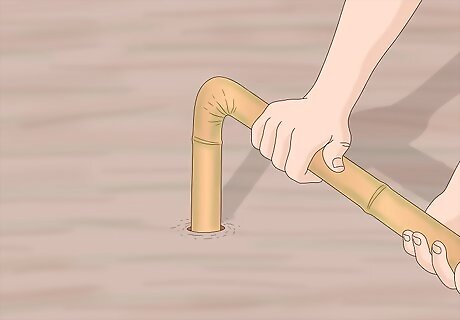
Prepare to bend the bamboo pole. Dig a hole in firm earth that is 6"-8" deep and slightly larger than the circumference of the pole. Holding it firmly for leverage, you are now ready to shape the pole. Begin by torching the pole again. Concentrate on the area you wish to bend, and keep the flame moving. Periodically wipe the pole with a wet rag. The water prevents the bamboo from drying out and becoming brittle. Dried bamboo can break or split easily. As you work the pole with the torch, begin to bend the bamboo pole into your desired shape. Repeat torching, bending, and dampening until you finesse the bamboo into the desired shape. This may take time. It is at this point that bamboo often splits, due to all of the stress it is under. The more time you take shaping the bamboo gradually, the less chance you have of splitting your pole.

Enjoy your newly-bent, heat-colored bamboo pole! These larger poles are used primarily for furniture, but can also be made into a variety of crafts.



















Comments
0 comment